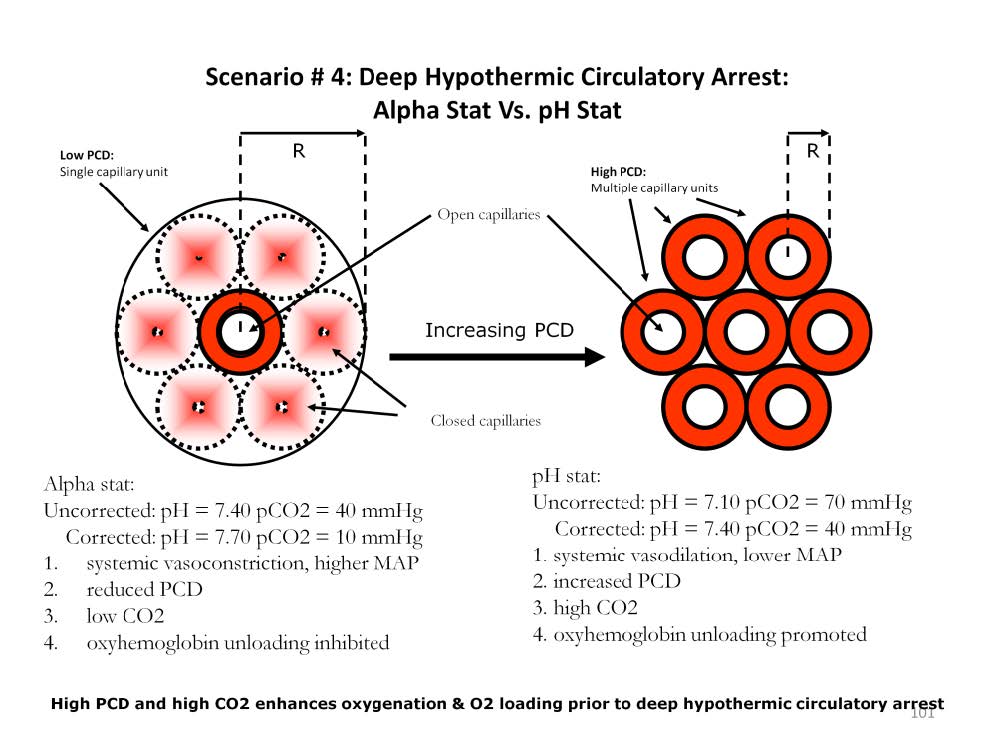
During alpha stat control, the degree of ionization (alpha) of the imidazole groups of intracellular proteins is thought to remain constant despite the change in temperature. This tends to buffer the intracellular pH within a normal, neutral range. In order to accomplish this, the carbon dioxide must remain at a constant level in the blood and tissues. Usually this means that sweep gas ventilation is matched to the same speed as the oxygenator blood flow. The resultant blood gas will read within the normal range without temperature correction at any temperature between 37C and 15C. Alpha stat control also tends to constrict the systemic arteries, particularly cerebral arteries. It also inhibits O2 disassociation from hemoglobin due to the low CO2 concentrations available to form carboxyhemoglobin which displaces the oxygen from the hemoglobin.
A pH stat control aims to maintain a temperature corrected pH of 7.4 at the lower temperatures of hypothermic cardiac bypass. This is achieved by having a pCO2 level which is higher than that required for alpha-stat management. From the alpha stat point of view, pH-stat management results in a respiratory acidosis at lower temperatures. Other effects include systemic arterial dilation, particularly in the cerebral arteries, and enhanced oxygen unloading from hemoglobin. Since more capillaries are open using pH stat, more oxygen can be dissolved in brain tissue during cooling. So pH stat control is better able to oxygen load a patient in anticipation of deep hypothermic circulatory arrest.
In general, adult patients seem to fair better when alpha stat control is used during routine cardiopulmonary bypass (CPB). “Fair better” means that there is less of a tendency to develop a base deficit during CPB. Pediatric patients tend to fair better using pH stat control. But there may be some variation in age groups. Adults who develop a base deficit during alpha stat control may fair better if pH stat control is implemented. The same is true of pediatric patients who develop a base deficit during pH stat control, with the base deficit stopping or reversing when alpha stat control is implemented.

Perfusion Theory is an educational platform for the Oxygen Pressure Field Theory (OPFT). August Krogh’s theoretical concept of the oxygen pressure field is explained and then applied to clinical applications in perfusion practice.